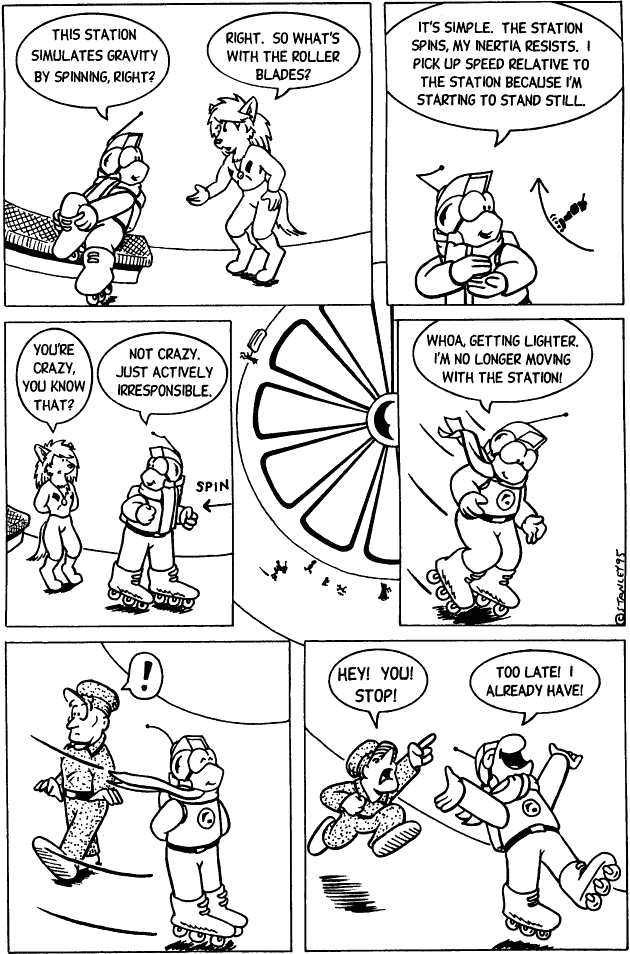The formula is pretty simple;
a = V^2/r
Where:
a = acceleration (use 9.8m/s/s for 1G)
V = velocity (m/s)
r = radius
Well, ok. I reluctantly understand that. Thanks for explaining. I'm not very good at maths if that wasn't obvious...

Yes, though I had to read that twice to work it out.
...though i do appreciate maths is probably better than my attempts to verbally describe something so pure (and poetic) as physical motion.
Soo, bearing in mind my poor maths skills and dodgy verbal prowess, feel free not to read my next question

By my calculations it will take someone travelling at 10m/s (i recommend a small shuttle/rail system) 4.15 minuets to travel halfway round a 1 mile diameter ring. Roughly 30 mins to walk it. This seems an acceptable time frame for people using the ring (but it does seem some form of fast (10m/s) travel is needed).
Now, 'If our Olympic sprinter ran against the spin, he would experience 0.35g. If he ran with the spin he would experience 0.67g'. This is a weight fluctuation of roughly +/- 30% when using modes of travel that approach 10m/s.
So my next question is: Do you think such a high percentage of weight fluctuation would be comfortable for people not used to the shifting 'tides' of space life (emissary's, diplomats, etc)?
As i understand it, motion sickness is caused by a difference between the information from your eyes and balance in your ears. So the shifting gravitational forces from the transport system a rotating ring like this would surly require, could make people who are prone to motion sickness (grav lovers) throw up allot.
Ofcourse, i may be over thinking things


 [link]
[link]